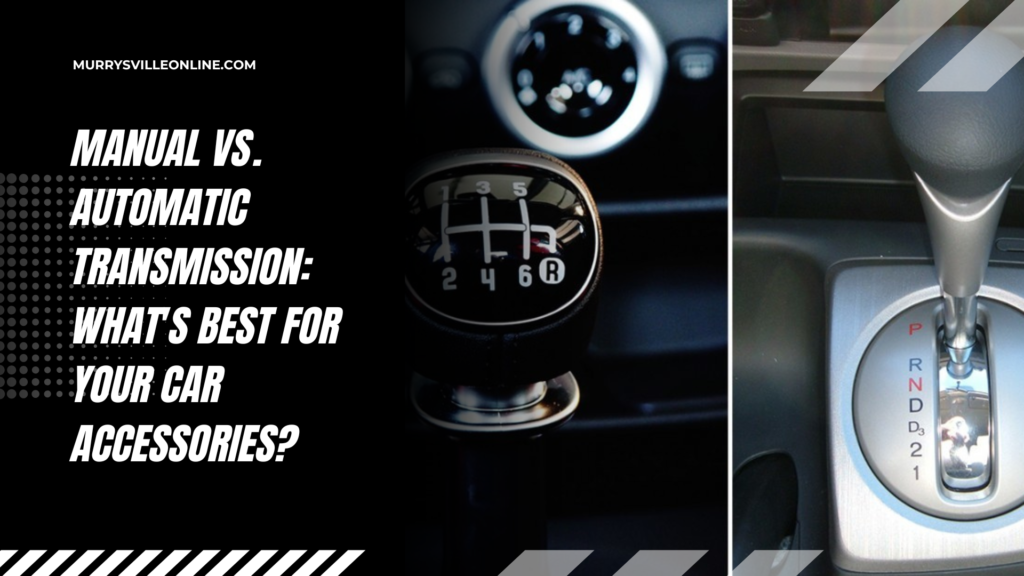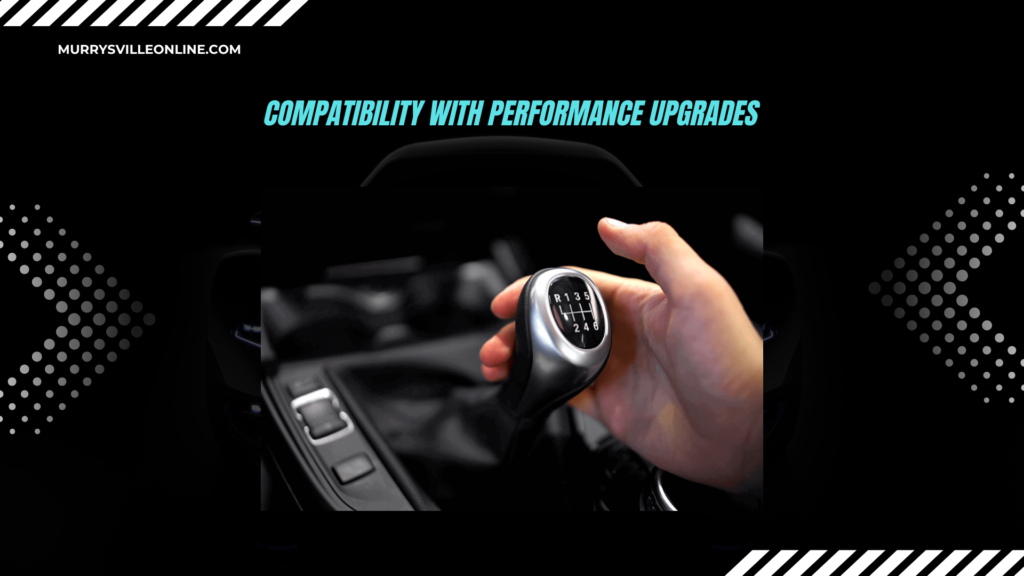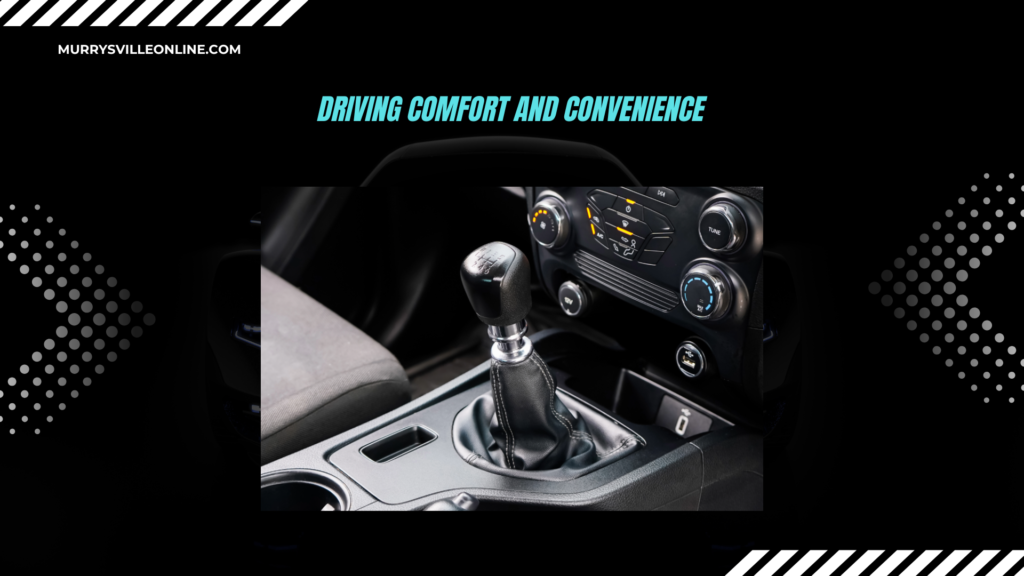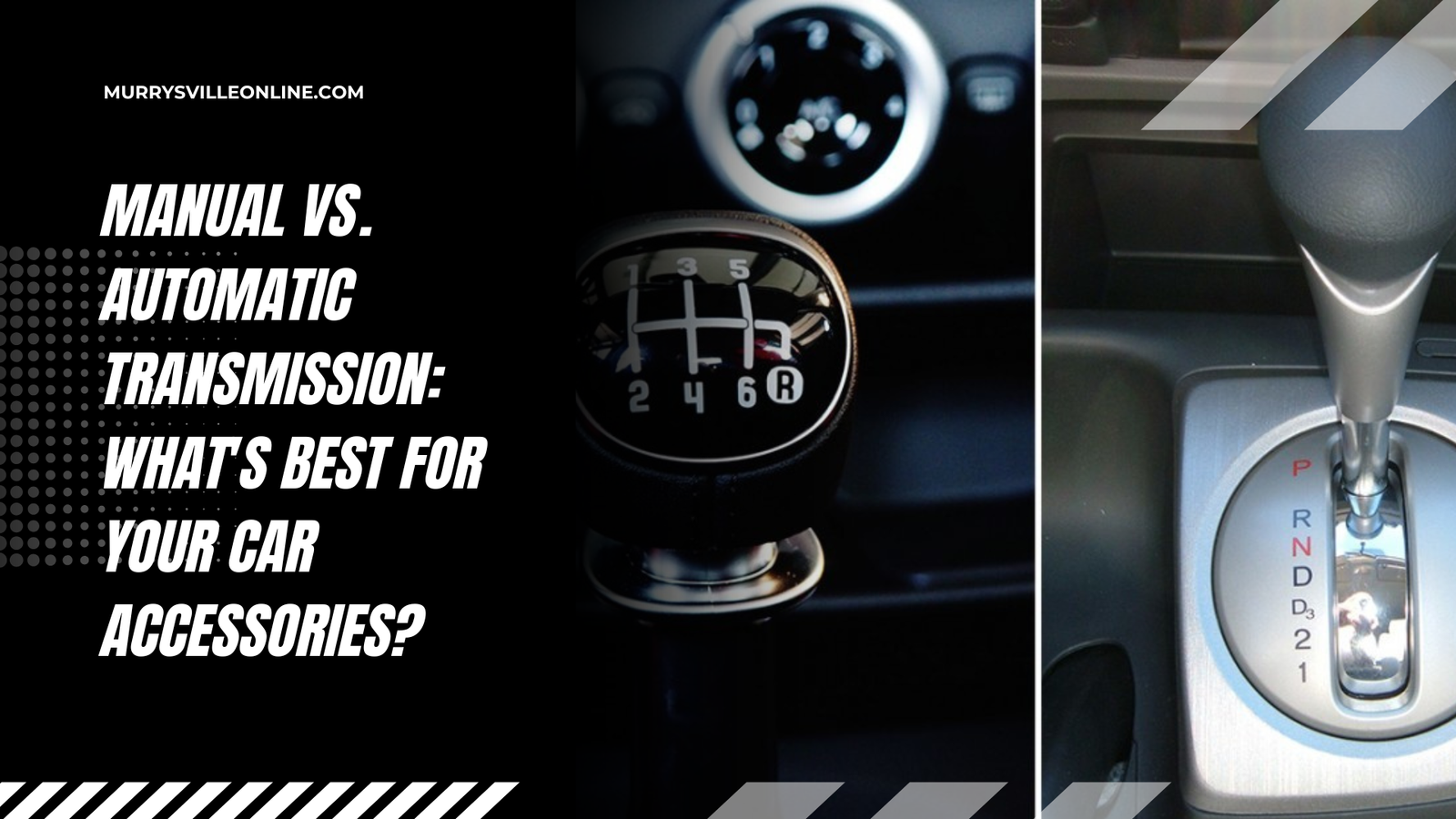
When deciding between a manual and automatic transmission, driving experience, performance, and fuel efficiency are of most importance. The decision also significantly determines your car accessories, from wear and tear to compatibility with high-tech options. In this article, we will discuss how transmissions influence your vehicle accessories and assist you in selecting which is the better choice for you.
Clutch and Transmission Component Wear and Tear
Manuals employ a gear shift and clutch pedal, which need to be exercised on a regular basis. They cause the clutch plate and related parts to wear down over the years. If you are driving every day in city traffic or constantly changing gears, the clutch will wear out faster, which can be expensive to replace. Accessories like aftermarket short shifters, high-performance clutch kits, and hardened gear linkages add longevity but will still need to be replaced.
Automatics, on the other hand, utilize a torque converter or a dual-clutch, reducing direct mechanical wear. Automatics still utilize transmission fluid and complex components like solenoids and sensors. Fluid degradation and ultimate electronic failure will be costly to fix. Transmission coolers, fluid additives, and high-filter quality are essential accessories to ensure maximum longevity of automatics.
Compatibility with Performance Upgrades

Car enthusiasts tend to tune up their vehicles for better performance. Manual transmission provides more upgrade possibilities in the shape of such things as high-performance clutches, lighter flywheels, and short-throw shifters in order to increase responsiveness and acceleration. Individuals who appreciate all control over gear selection would use manuals to utilize while race driving or when driving aggressively.
Automatics, particularly newer ones with paddle shifters, are performance-oriented but not as tweakable overall. Upgrade of automatic transmission can be ECU tuning, altered valve bodies, or transmission cooling systems. In spite of the convergence of automatics, manuals remain to be the first choice for tweaking pertaining to performance.
Fuel Efficiency and Accessory Usage
Fuel economy relies on driver habits and the transmission type. Manuals used to be more efficient in the past because of the accuracy of drivers’ gear-shifting. Newer technology in automatics like CVTs and dual-clutch transmissions has increased fuel efficiency.
The remaining automobile accessories that enhance fuel economy both for manual and for automatic transmissions are engine tuners, fuel additives, and eco-friendly driving apps. The pattern of shifting should be maintained in check for the driver of a car employing a manual transmission whereas his/her automated companions require appropriate transmission fluid alongside filtering check-ups.
With the coming of intelligent car accessories, transmission option affects the support for upscale technology. Automatic transmissions better lend themselves to more sophisticated driver assists like adaptive cruise control, lane-keep assist, and parallel parking systems. Such technology depends on smooth, precise shifting from one gear to another, and automatics deliver better.
Manual cars, although still compatible with basic tech gadgets like GPS and dash cams, may not be compatible with future autonomous technology. If you want a car with the latest technology, an automatic transmission would generally be your best choice.
Cost of Maintenance and Repairs
Manuals have fewer components of hardware, so they are less complex and less expensive to repair. The clutch replacement is a routine fix job, yet maintenance costs are generally lower compared to automatics. The do-it-yourself crowd can typically perform simple repairs, keeping long-term expenses minimal.
Automatics are handy, though they are more expensive to repair. Highly advanced electronic components, sensors, and hydraulic systems mean using specialized technicians and diagnostic tools. Some costs may be deferred by extended warranties and maintenance agreements, but automaticallys are a more expensive choice overall to maintain.
Driving Comfort and Convenience

Automatics provide a more comfortable, smoother ride, especially in heavy traffic.They relieve the driver from pressure brought about by fatigue resulting from repeated gear-changing. Attachments like ergonomic seat cushions, steering covers, and cellular phone attachment points offer convenience to automatic vehicles.
Manuals, as much as they are thrilling, are more work. Those that enjoy being completely in control of their vehicle may appreciate the feel of their hands on the job, but for those who desire ease, automatics will be the choice. Extras like clutch pedal extenders and shift knobs can add to the enjoyment of driving for those with a liking for manuals.
Conclusion: Which is Better for Your Car Accessories
Both automatic and manual transmissions have their pros and cons regarding car accessories. If you care about performance modification, low cost of maintenance, and a more engaging driving experience, then a manual transmission is best for you. But if you prefer new technology, driving comfort, and ease of use, an automatic transmission is best.
Lastly, the best transmission is based on your drive preference and accessory needs. Either on manual or automatic transmission, a proper car accessory can make your vehicle more efficient, more powerful, and warmer.
